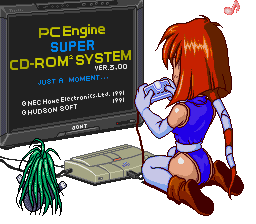wayback://nfggames.com/games/GnG/
neat little page that compares
the SuperGrafx Ghouls 'n Ghosts to the Genesis one.
As good as those renditions were, neither compares to the X68000 Ghouls 'n Ghosts. This is TRUE arcade perfection.
see how not-arcade perfect the SG version really is. well its only 8-meg. the arcade was 2 MB (16-meg) and the X68000 version is the same size.
btw, the X68000 for those that don't know, was a 16-Bit
computer in Japan made by Sharp and Hudson. Yep, Hudson did its custom hardware, they also did the PCE's
I feel that the X68000 is what the SuperGrafx should have been. that is, a true 16-Bit machine with awesome graphics and audio, over and above the PCE/TG16.
Among its many fantastic 16-bit games, the X68000 has a rippin version of Castlevania and STRIDER that is a clone of the arcade, another game the SuperGrafx was meant to have!
neat little page that compares
the SuperGrafx Ghouls 'n Ghosts to the Genesis one.
As good as those renditions were, neither compares to the X68000 Ghouls 'n Ghosts. This is TRUE arcade perfection.
see how not-arcade perfect the SG version really is. well its only 8-meg. the arcade was 2 MB (16-meg) and the X68000 version is the same size.
btw, the X68000 for those that don't know, was a 16-Bit
computer in Japan made by Sharp and Hudson. Yep, Hudson did its custom hardware, they also did the PCE's
I feel that the X68000 is what the SuperGrafx should have been. that is, a true 16-Bit machine with awesome graphics and audio, over and above the PCE/TG16.
Among its many fantastic 16-bit games, the X68000 has a rippin version of Castlevania and STRIDER that is a clone of the arcade, another game the SuperGrafx was meant to have!


 10/31/2023: Localization News - Dead of the Brain 1!
10/31/2023: Localization News - Dead of the Brain 1!

